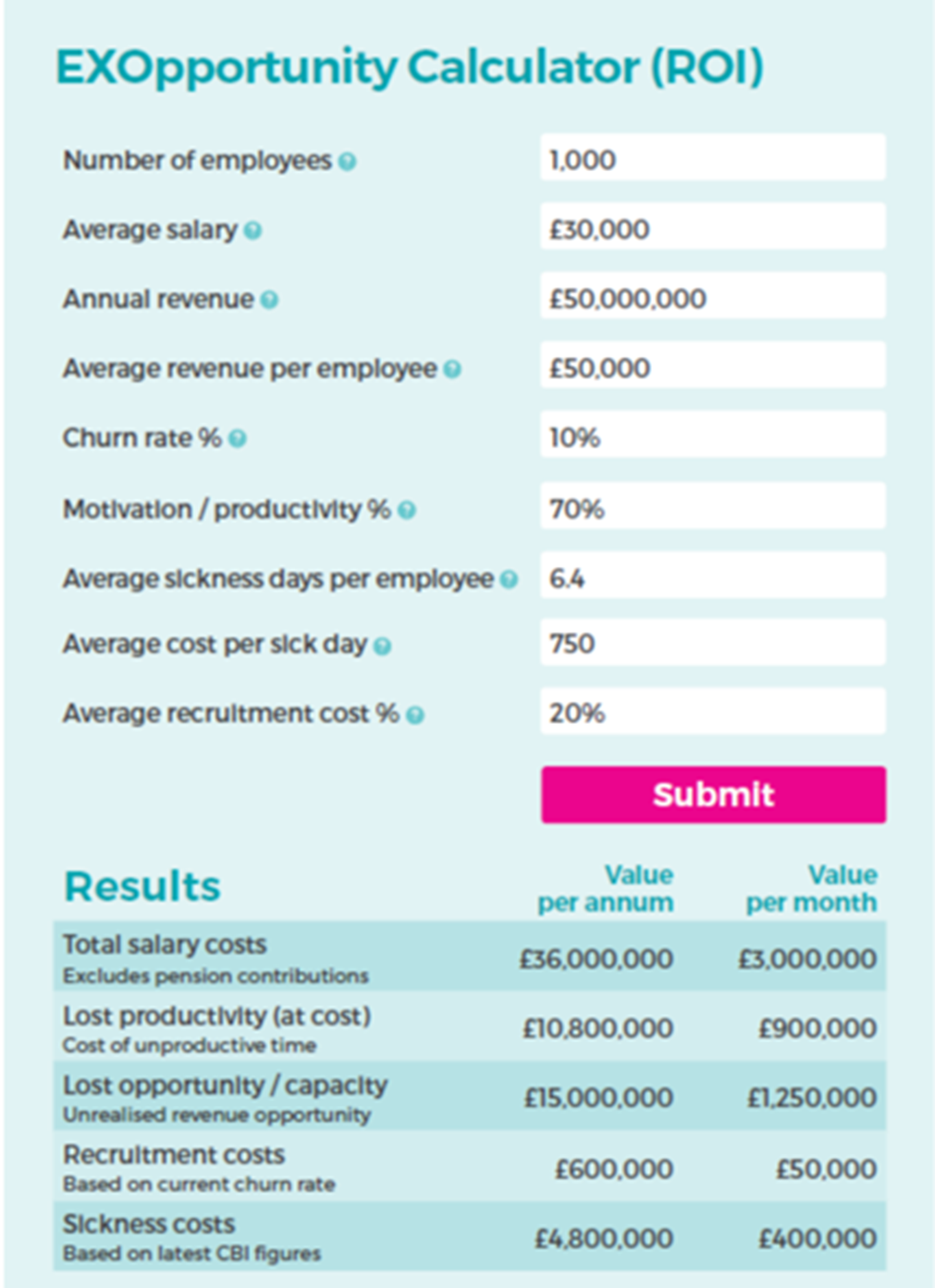Leaders love ROI and mojo can drive that all-important productivity that can boost the bottom line
Through our research via the Employee Experience Opportunity, we’ve found that the business case for investment in people at work simply hasn’t been made. This is a shame as the ROI of your Employee Experience (EX) is more compelling than that of your Customer Experience (CX). ‘Really?!’ – we hear most senior leaders say. Yes.
Focusing on improving your CX is a waste of time, unless you have the EX bit right first. It’s easier to improve your EX as you already have your captive audience: your employees. Investment in CX is gambling on attracting new customers and keeping current ones happy. You may or may not obtain new customers and current ones can shop elsewhere, but you will definitely have your employees every day.
Employees choose to work at an organisation. In most cases, there are alternatives available, so something has made them decide to work at yours. It could be the location, the salary, a bigger role, growth plans... whatever it is, they’re at one organisation and not another for at least one reason. With some rare exceptions, people come to work with the hope of doing a good job and fulfilling their duties. People become unmotivated and obstructive because of a poor EX; few join an organisation with the intention of behaving this way.
Furthermore, the salaries of your employees are on the profit and loss each month and are likely to be one of your biggest costs. It makes sense to seek to gain maximum effectiveness from this large fixed cost.
Productivity is an outcome of an effective EX
Just imagine how much more profitable your organisation would be if, on average, all employees were 5% more productive? If calls were answered 5% quicker, if the first-time resolution rate rose by 5%, if the quality of new hires improved by 5%. Productivity leads to performance which leads to profits.
Think about it: is it easier for your organisation to attract more customers, or to obtain more productivity from your employees? (Which, in turn, can often lead to more customers, which can lead to more sales.)
Are you measuring the most impactful things?
Ultimately, businesses are mostly focused on competitive advantage, growth, and profitability — but these can’t be measured via the ‘fluffy stuff’, which many Engagement teams sweat over, such as clicks, views, and engagement rates. The golden goose is to correlate EX activities to the bottom line. So, we have created the EXOpportunity Calculator™ so that you can share with your own senior leaders the impact of a motivated, productive workforce.
Senior leaders and budget holders love numbers and the calculator will allow you to build a business case based on your specific organisation that is backed up with real numbers. The beauty of it, is that it is not generic; you can use data about your own organisation.
How to use it
To get the most accurate result from the calculator, you will need to have undertaken a mojo mapping exercise at your organisation. However, in lieu of having these figures, you could do an indicative calculation using the average motivation percentage of 65% or even substituting the motivation % figure with satisfaction % levels. (But as there’s no proven correlation between satisfaction and motivation, you couldn’t use this as a ‘real’ figure.)
However, a substitute figure can help you to see immediately how the calculator works and the potential opportunity that comes from investing in your employees’ motivation and experience - and in mojo itself.
Here is a breakdown of the different metrics the calculator considers:
- Number of employees: Add the number for your organisation based on total headcount
- Average Salary: Add the average number for your organisation
- Annual Revenue: Add the actual number for your organisation
- Average Revenue per employee: Annual Revenue/No of employees
- Churn Rate %: Add the exact number for your organisation
- Motivation %: The organisation-wide score from mojo maps
- Total Salary Costs: No of employees X Average Salary X 1.2 (to allow for employer NI)
- Lost Productivity at Cost: Total Salary Costs X (100%—Motivation %) = Cost of Unproductive Time
- Lost Opportunity / Capacity: Annual Revenue X (100%—Motivation %) = Unrealised Revenue
- Recruitment Costs: (Churn % X No of Employees) X Average Salary X Average Recruitment Cost
- Sickness & Absence Costs: Taken from the CBI calculations
You will see that a seemingly small percentage shift in motivation and productivity can have rather large financial implications for businesses of all sizes. Armed with a compelling ROI calculation for your organisation, you can have powerful conversations with senior leaders to secure support and budget for EX improvements.
Once mojo is rolled out at your organisation, you can use the calculator to track ROI progress over time.
You can access the EXOpportunity Calculator here.



